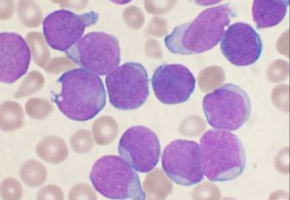
Novartis today announced that the European Commission (EC) approved midostaurin for two indications in rare, hard-to-treat cancers.
Midostaurin is approved for use in combination with standard daunorubicin and cytarabine induction and high-dose cytarabine consolidation chemotherapy, and for patients in complete response followed by midostaurin single agent maintenance therapy, for adults with newly diagnosed acute myeloid leukaemia (AML) who are FLT3 mutation-positive.
It was also cleared for use as monotherapy for the treatment of adults with aggressive systemic mastocytosis (ASM), systemic mastocytosis with associated haematological neoplasm (SM-AHN) or mast cell leukaemia.
The approval follows a positive opinion issued by the European Medicines Agency's (EMA) Committee for Medicinal Products for Human Use (CHMP) on July 20, 2017 and applies to all 28 EU member states, plus Iceland, Liechtenstein and Norway.
Midostaurin represents the first and only targeted therapy for FMS-like tyrosine kinase 3 (FLT3)-mutated AML and the only treatment for three subtypes of SM, collectively known as advanced SM, in the EU, all of which have limited life expectancy and few treatment options.
Midostaurin represents the first major advancement for the treatment of patients with newly diagnosed FLT3-mutated AML in more than 25 years.
For newly diagnosed FLT3-mutated AML, the approval is based on data from the RATIFY trial, which was conducted in collaboration with the Alliance for Clinical Trials in Oncology and 13 international cooperative groups.
RATIFY is the largest trial to date among people with this specific type of AML and results of the trial were recently published in the New England Journal of Medicine.
The study showed a 23% reduction in the risk of death with midostaurin plus standard chemotherapy compared with placebo plus standard chemotherapy.
Median overall survival of 74.7 months and 25.6 months, respectively (hazard ratio [HR] = 0.77, 95% confidence interval [CI], 0.63, 0.95; one-sided p=0.0078).
In the RATIFY trial, the most frequent adverse reactions (incidence greater than or equal to 30%) in the midostaurin plus standard chemotherapy arm were febrile neutropenia, nausea, exfoliative dermatitis, vomiting, headache, petechiae (small red skin spots) and pyrexia.
The most frequent Grade 3/4 adverse reaction (greater than or equal to 5%) was febrile neutropenia, lymphopenia, device-related infection, exfoliative dermatitis, hyperglycemia and nausea.
For advanced SM, the approval is based on two single-arm open-label multi-center trials, including the Phase II study (CPKC412D2201), the largest prospective trial ever conducted in this rare disorder, the results of which were also published in NEJM.
The efficacy of midostaurin was established using modified Valent criteria, with patients demonstrating an overall response rate, defined as a major or partial response, of 59.6% (95% [CI], 48.6, 69.8%).
Efficacy was also assessed in a post-hoc analysis using the 2013 International Working Group-Myeloproliferative Neoplasms Research and Treatment-European Competence Network on Mastocytosis consensus criteria (n=113). This assessment estimated an overall response rate of 28.3% (95% [CI], 20.2, 37.6).
In advanced SM, the most frequent adverse reactions were nausea, vomiting, diarrhoea, peripheral edema and fatigue. The most frequent Grade 3/4 adverse reactions were fatigue, sepsis, pneumonia, febrile neutropenia and diarrhoea.
Source: Novartis International
We are an independent charity and are not backed by a large company or society. We raise every penny ourselves to improve the standards of cancer care through education. You can help us continue our work to address inequalities in cancer care by making a donation.
Any donation, however small, contributes directly towards the costs of creating and sharing free oncology education.
Together we can get better outcomes for patients by tackling global inequalities in access to the results of cancer research.
Thank you for your support.